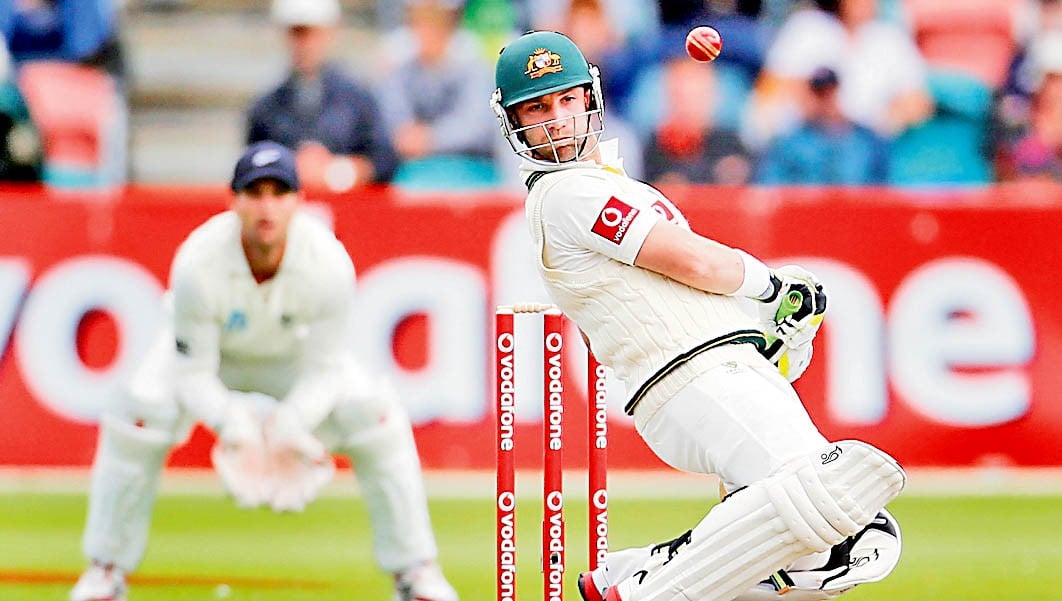
We acknowledge that potential danger exists on the pitch but dismiss it almost instantaneously. You never really see it as real. Until Tuesday. Now it is very real and I, like many others, have been shaken to the core

On the 25th of November 2014, arguably the most shattering incident in Australian cricket history took place at the Sydney Cricket Ground. Now, as one of the 66 first-class cricketers who was battling out the fourth round of Sheffield Shield matches that day, I sit here writing about what has become the saddest day in Australian cricket history.
Writing down my thoughts and emotions right now, on advice from an expert, seems to be a way of helping, despite the fact that intermittently I am stopped completely in my tracks by the sheer weight of the devastation and shock I am feeling.
It’s also difficult because I can’t stop crying.
I, along with my Queensland team-mates, interstate compatriots and indeed cricket supporters anywhere and everywhere, am overwhelmed with emotions following Phillip Hughes’ tragic accident. Grief, despondency, heartbreak, fear, disbelief.
It is hard to express how heavy my heart is; I cannot possibly fathom the pain his family, closest friends and those with him on that day must feel. Individually we all knew Phillip in our own way and had our own personal reasons as to why this will affect us so badly. He is a son, a brother, a friend, a team-mate, an opponent, a hero.
But the one thing in common is how much we will all hurt for a long, long time. The other thing that will linger will be the shocking realisation of how real this whole sad incident was.
For professional cricketers, the pitch is a second home. Almost like a sanctuary or safe haven, it feels so comfortable to be out in the middle, so natural to run in and bowl a delivery or to face up to it.
In spite of this comfort, we are, of course, always aware of the potential dangers that lurk within each bat and ball contest. Like the speed or bounce of a fast bowler and the bruises and welts that may come from a misjudged shot, or the lusty swing of a booming cover drive that sends the ball whistling past the close-in fielder.
The potential of these things occurring manifests itself within the player as an adrenaline rush of both excitement and fear, and how you balance this conflict of emotion and stop it swaying towards the undesirable often determines how you handle the contest.
And you’ve trained yourself for countless hours to react successfully in that split-second, so sure, you acknowledge that potential danger but you dismiss it almost instantaneously. You never really see it as real.
Until Tuesday. Now it is very real and I, like many others, have been shaken to the core.
One way people deal with tragic circumstances is to try to find reason for it. A ‘cause and effect’ theory that helps rationalise a situation that seems completely irrational. I’ve read about helmet designs, bouncer rules, batting techniques, even ambulance response times. In trying to comprehend how this could have happened, why this happened, people are examining these details.
But sadly in this instance, and why many of us are struggling, is that we just can’t, and shouldn’t, apportion any blame or reason to any one thing. Each time I think about it myself, it comes back to the simple fact that a high-speed, combative sport will always have the potential for accidents. Tragically, this was one of them.
Batsmen have been facing bouncers for decades, both with and without helmets. They have ducked and swayed, they have been hit, they have fended, they have hooked and pulled.
Think about the last day of cricket you played or watched -- how many balls whizzed towards a batsman’s head? And how many times did play go on the very next ball, danger averted? It is scary to think just how many. But not on Tuesday.
The circumstances were so common to cricketers but the dreadful consequences were just so not common. What happened on Tuesday could have been any time at any place during any cricket match -- which is what makes it so scary, so tragic and so incredibly difficult to comprehend.
In the end, it was just a freak accident. No reason, no cause, no discrimination. Brett Lee, amongst the tens of thousands of the cricket community who have poured their support, prayers and love to Phillip and his family, may just have summed it up best. He said ‘life isn’t fair sometimes’.
And it isn’t. No reason, no explanation, no discrimination. Sometimes it is just unfair. Like on Tuesday. I don’t want to think too much about why this happened or how unfair it is. Even though it is. Right now I just want to think about Phillip Hughes and remember him for the man he was.
A country boy who loved his cricket, whose thirst for runs was matched only by his unwavering determination and quiet resolve, whose character and qualities made me proud to be an Australian when he wore the baggy green.
His cheeky grin, his blistering cut shot, his optimistic thumbs up. Phillip Hughes. RIP. -- Cricinfo